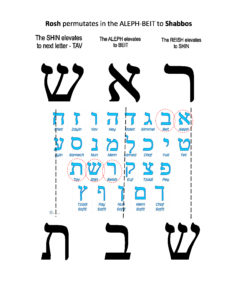
08 Jun Naso; ‘I Want a Raise’ and Insights on Recovery (excerpt)

Howard Fox (Israel)- Floating City
Inspired by the teachings of Harav Yitzchak Ginsburgh and Rabbi Moshe Genuth
A most meaningful teaching of Torah is the teaching ‘to raise up… to elevate… Naso’ . This concept can apply to a person, place or thing such as ones tefillah (prayer), an object to be used for mitzvah such as our food, or another person. It could be the 4 species of Sukkoth…or the putting on of tallis and tefillin. We see in this parsha that the act of taking a census .i.e. ‘counting each head’ which raises or elevates each person as an integral part of the collective Nation of Israel. Everything in this world can have a potentially elevating impact as we elevate ourselves as Jews, others and Klol Yisroel, and the world.
In Parshas Bamidbar and Naso we see the idea of ‘raising up the head’. In Bamidbar, in the counting of the census, we see the word for ‘census’ is ‘rosh’. The same word ‘rosh’ is used for ‘head‘.
As Rosh = Shabbos
When we look at a the raising (elevating) of the word ‘rosh’ ר-א-ש using Kabbalistic mesora (tradition), we ‘raise’ each letter up to its following letter in the Hebrew alphabet so; reish – ר becomes ש-shin., aleph א becomes ב beit.., and shin-ש becomes ת tet, thereby revealing the concealed word Shabbos- ש-ב-ת. The head or ‘rosh’ represents the elevation of all 6 (mundane) days of creation. Here the ‘rosh’ as the head of the week is the culmination of all of the 6 days that are ‘raised up’ as the 7th-day, Shabbos – ש-ב-ת . The rosh ר-א-ש becomes elevated as Shabbos – ש-ב-ת… ‘the head becomes raised’. (see diagram below)

Naso- To Raise Up
When the Kohanim perform their blessing to the congregation, they ‘raise the palms of their hands’. The Kohan with his mind, his heart and his hands, becomes a conduit for blessing. The 10 fingers of the hands of the Kohanim became the points of emanation of the rectifying powers of the 10 sefirot as his ‘yad’ or hand. We often hear the phrase ‘by the hand of G-d’ which is an anthropomorphization of G-ds spiritual light transforming into a pluralistic reality of the physical and spiritual worlds at the point of contraction of His Light . This point of contraction is the tsimtsum. Our entire being, as Jewish individual and collectively are ‘as as-a tsimtsum’, a point of contraction for receiving and transmitting spiritual energy. At the time of the Temple, Kohanim were effective at this particular task of being a conduit for blessings. These spiritual energies were available and the Kohanim were in their vigil state of purity to be a conduit to receive and bless us. (For more on the letter ‘YUD’ see Rav Ginsburgh at http://www.inner.org/hebleter/yud.htm).
When Moses gave Hosea (to be later known as Yohoshua [Joshua] ) the gift of a ‘yud’, there was a reflected change in his name and his being. This blessing of the ‘yud’ gave Yohoshua the ability to lead the nation. As we said, the letter yud has a gematria of 10, which represents the complete 10 units of the sefirot .
The point of contraction of G-ds light, the Tsimtsum, is also referred to as the point of the ‘yud’. The tetragammaton (The Name) Y- K- * Y reflects the loftiest world of the 4 worlds of Creation, Emanation. Yohoshua thus had the ability with the addition of the ‘yud’ to his name; ‘his being’, to then be able to be a suitable leader of Klol Yisroel by being able to connect and receive from a lofty spiritual place.
The Nazir (consecrated, separated) Parshas Naso
In the pursuit of a lacking state of spiritual purity one may take on the astringent vows of the Nazir who’s purpose is to raise himself up to a more pure and holy state. During this period of vow an individual separates himself out from many things of the physical world that may lead to temptation and transgression in order to focus on tshuva, a return to a holy state with G-d.
This includes having all his hair shaved at the beginning and end of the period of his Nazirite vow. The hair is believed to hold spiritual impurity. The hair is considered to be like spiritual conduits….antennae (a reason why men wear beards and payis; to connect the higher and lower parts of their neshama [spirit]).
Spiritual impurities also grow out throught the hair. As the individual wishes to reach a higher state of purity, his hair would have transmitted impurities of the body and therefore be considered an obstacle to the end of higher purity. Accordingly, the Nazir shaves all his body hair as he begins his period of purity, and also at the end of the period of the Nazir. Lastly, these final cuttings of hair at the end of his term would contain the final remnants of impurity and are burned as a part of an offering for rectification (tikun). It is interesting that today that scientific DNA testing of the hair can reveal ‘toxins’ that have been in the body from many months ago.
The Nazir and Recovery
In a world so filled with desire and addiction, we learn from the Nazir that where there are obstacles to a greater spiritual connection with G-d, we need to look to divest or ‘cut away ‘ (aka brit, circumcise) of certain things in order to create a void to be able to receive a greater spiritual connection. For example, a Nazir must remove himself (cut away, abstain from) anything made of the grape vine; wine grapes, skins of grapes, seeds of grapes . Amongst the prohibitions of a Nazir is the prohibition of sexual relations (the most powerful of all desires). We learn form the Nazir the need to separate ourselves from the desire of things that may cause us a ‘blockage’ , and to maximize our ability to connect spiritually.
In the classic sefer Hilchos Tshuvah – The Laws of Tshuvah, the Rambam teaches us that the first step to acquiring a more meaningful spiritual relationship is to stop doing the things that create obstacles in order to our return to pristine state. The 12 Step Program, a program of abstinence of addiction recovery from substance and behaviours shares the same philosophy of the Nazir; abstinence, separation and elevation . One should know the Rambams’ Laws of Tshuvah. One should remove themselves, ‘make a fence’ from any possible temptations.
It is our obligation to elevate ourselves, and others as well.
Leib Getzel (Lawrence) Lax
Addictions and Counseling
lawrenceJlax@gmail.com
http://LawrenceLax.com
http://AuraOfTorah.com